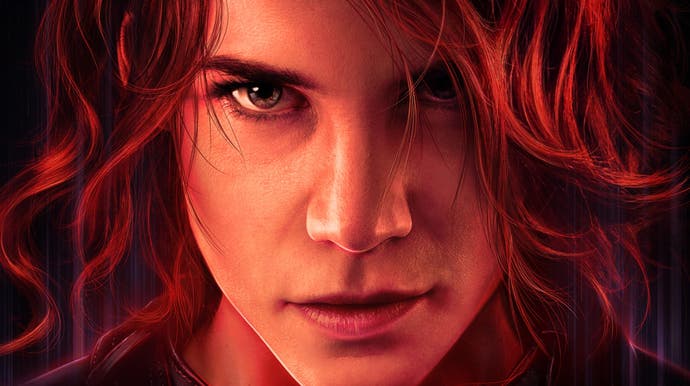Control Ultimate Edition - how next-gen consoles transform a classic game
60fps or ray tracing, which should you choose?
Remedy's Control has a special place in the collective heart of Digital Foundry. Not only is it one of the best games of 2019, the revised Northlight engine is also an absolute showcase of the state of the art in rendering technology, which also happens to feature one of the best implementations we've seen of hardware accelerated ray tracing. Somehow, the developer managed to squeeze the core experience (bar RT) into the last-gen hardware, but now owners of the next-gen consoles get to see Northlight stretch its legs: Control on PlayStation 5 and Xbox Series consoles is a delight.
The basics of the upgrade are already out there, courtesy of Remedy PR. There's feature parity between PlayStation 5 and Xbox Series X with Control rendering at a native 1440p resolution, with temporal upsampling to 4K. Two modes are on offer - a 30fps capped experience featuring ray traced reflections (including transparencies) along with a 60fps performance mode without RT features. Meanwhile, Xbox Series S has no RT features, meaning a performance mode as the standard that renders natively at 900p, with a 1080p output. Dynamic resolution scaling is not implemented in this game.
But before we go into the specifics, I feel it's important to recap why this is a landmark game. From my perspective, Control was a glimpse at the future of rendering technology - and even next-generation gameplay. Even factoring out ray tracing, Control is doing a hell of a lot behind the scenes. Take the destruction system, where nearly every object can be broken down into its constituent parts. Then there's the sheer wealth of those objects in any given scene - an all-out firefight with the physics system in full effect is an astonishing spectacle. Then there's the fluid rendering simulation for the Hiss smoke: when objects or enemies traverse through this semi-transparent fluid, there's visible turbulence - a dazzling dance of colour with waves.
And even without hardware RT, Control still uses a form of ray tracing on all systems: signed distance fields are used to deliver coarse, but accurate reflections to augment the standard screen-space effect. Basically, when screen-space data is not available, fall-back reflections are generated by a trace of sorts into a simplified game scene. All told, this is a lot of tech that's not often seen on last generation consoles, and it was born out on the last-gen systems where PS4 Pro ran at native 1080p, while One X topped out at 1440p. Meanwhile, there was the sense that the old Jaguar CPU cores were pushed to breaking point - performance in Control improved via patches, but overall consistency was still an issue.
On the next-gen consoles, PS5 delivers 1.8x the pixel density of PS4 Pro and does so with either double the frame-rate or hardware accelerated ray tracing - a spec matched by Series X. There'll be a lot of discussion about whether to play with RT or to run at 60fps, but Control is an action-packed game and requires some rather fast inputs at times, so for sheer playability, the performance mode is going to be difficult to top. Even so, all modes benefit from extra polish and quality of life improvements - loading times are dramatically improved to the point where PS5 can even stream in data a touch faster than a Core i9 10900K paired with a fast 3.5GB/s NVMe SSD. It's a night and day improvement compared to the last-gen consoles.
We'll be talking specifically about performance in a different piece. Thus far, we've only played PS5 with the day one patch, but we have taken a look at Xbox Series consoles with gold master code. On PlayStation 5, the 60fps mode is mostly solid, with slowdown only really manifesting in the most effects-heavy combat, where the screen is filled with taxing effects work. Meanwhile, the RT mode at a capped 30fps is consistent, properly frame-paced and sticks doggedly to its target for the vast majority of play with only minor deviations. Xbox Series consoles are similar, but what looks like occasional I/O stutter seen in last-gen versions (and also in PC) is present. We'll cover this in more depth in a separate piece with more detailed analysis.



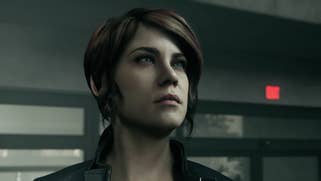




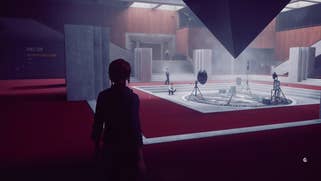
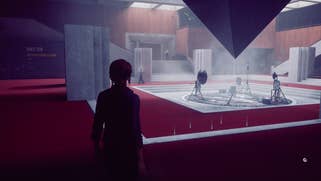

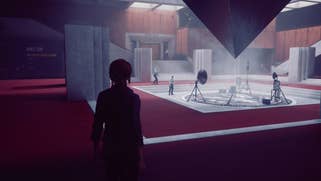



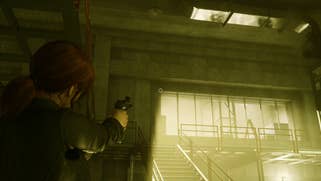



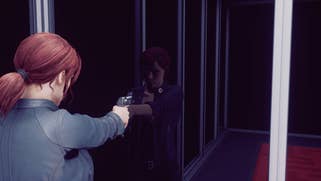

But if 60fps is the preferred way to play, Control's 30fps RT mode is dazzling. The RT horsepower in the new consoles isn't enough to deliver the full array of PC's ray tracing features but you are getting the best bang for the buck with RT reflections on opaque surfaces - like marble, metals and anything that is remotely shiny - as well as transparent reflections for glass. I'd suggest looking at the video at the top of the page for a more detailed breakdown of the wonderful advantages that real-time hardware-accelerated ray tracing brings to the table, but essentially we are talking about accuracy, precision and an often transformative visual effect. Put simply, the choice of materials in Control's environments and objects, not to mention its overall design, is a perfect match for the technology. With both night and day improvements to environmental detail, right down to added intricate detail in the smallest of objects, the 30fps RT mode is still a brilliant way to play the game.
My favourite part of the ray traced reflections on PS5 is how they stabilise the image. In a third person perspective game, it is really common for your character model to obscure a relatively large amount of the screen, so screen-space reflections don't work properly any more - the character simply occludes too much of the viewable area, creating large visible errors in SSR effects. With RT reflections in quality mode, this is completely negated and the image is much more stable, on top of being more realistic. The 30fps cap might be too much for some to swallow though, and I can only hope that a lower resolution 60fps RT mode might make the grade at some point in the future. The drop to 900p in Series S for its performance mode is obvious, but it's a trade I might be willing to make if I could get the RT reflections back as part of the compromise on the more capable consoles.
Altogether, I think Control Ultimate Edition on PlayStation 5 is excellent. Whether you gain RT reflections at 30fps, or run the game flat-out at 60fps, you're one step closer to seeing Remedy's vision delivered at its best - and the upgrade over last-gen is profound. The only way to better it is via the existing PC game running on high-end hardware, preferably with an Nvidia RTX card: you get more ray traced effects, higher precision rasterisation settings and one of the best implementations of Nvidia's DLSS AI upscaling, opening the door to 4K 60fps with all RT effects enabled on RTX 2080 Ti, and RTX 3070 or better. Lower the resolution and less capable RTX cards can still offer up a fantastic experience.
In the video at the top of this page, you'll see how the next-gen console versions compare to PC more directly, though the new console version is based on a revised rendition of the Northlight engine with two key differences. The first is in the ray tracing implementation, where consoles use a checkerboard resolution (for reflections only) up against native on PC. The other custom setting concerns the level of detail distance, which works differently under the new engine version found on PlayStation 5. In practice, I have found that this new LOD sorting is typically producing an effect lower than PC's lowest setting. It's worth pointing out that this is fairly minor stuff in terms of the overall presentation.
Ultimately, Control has transitioned nicely onto the next generation machines. It's clearly a big step-up over the last-gen versions of the game - even running on PS4 Pro and Xbox One X. The ray tracing effects are beautiful, while playing Control at 60fps takes the gameplay to another level. It's also nice to see that slick, smooth transformation in the experience delivered on all of the new machines, even the budget-orientated Xbox Series S. Remedy itself has mentioned that this is just the beginning of their efforts in embracing the next generation of console hardware and that there's much more to come in future - and based on what the team managed to extract from last-gen hardware, the possibilities are mouthwatering. We'll be taking a more detailed look at game performance and comparisons across all next-gen systems as soon as we can. However, having sampled the fully patched PlayStation 5 rendition of the game, the idea that this excellent conversion is being given away free with PlayStation Plus may well make this one of the best line-ups we've seen from the service.
